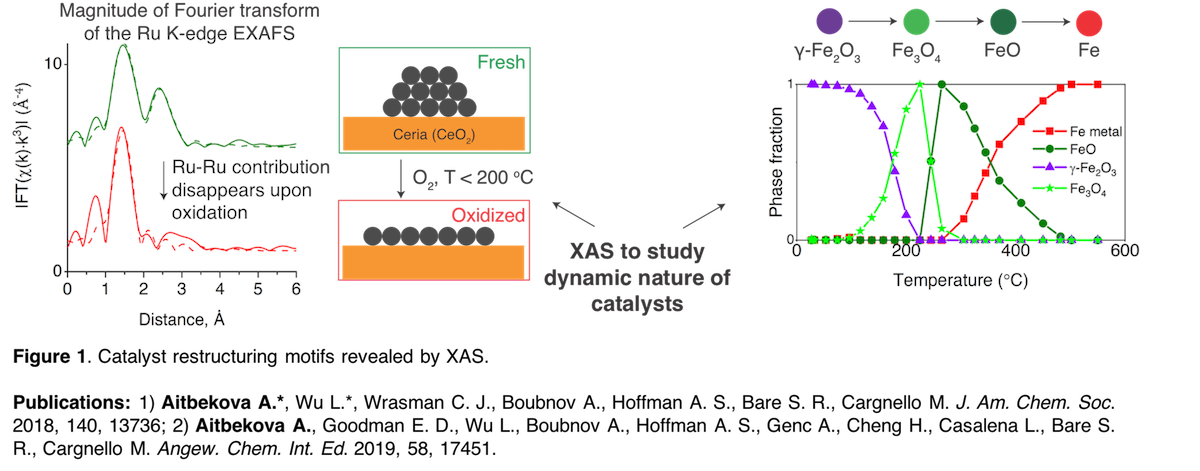(618a) X-Ray Absorption Spectroscopy Reveals the Dynamic Nature of Catalysts
AIChE Annual Meeting
2022
2022 Annual Meeting
Catalysis and Reaction Engineering Division
CO2 Upgrading I: Thermocatalytic Approaches to the Production of Fuels and Chemicals
Thursday, November 17, 2022 - 12:30pm to 12:48pm
First, when oxidized at temperatures < 200 °C, Ru NPs on ceria disintegrate into single atoms, as evidenced by the disappearance of the Ru-Ru scattering in the oxidized catalyst (Figure 1,I). This change impacts the catalyst’s CO2 hydrogenation performance: while the NPs convert CO2 and H2 into methane, the single atoms exclusively make carbon monoxide. Second, by applying linear combination fitting of in-situ Fe K- edge XANES, I have identified the stepwise reduction of iron oxide to metallic iron (Figure 1,II). This information enables tuning of the catalyst’s ability to make C2+ products from CO2 and H2. In-situ characterization tools were instrumental in this discovery, given iron’s susceptibility to oxidize in ambient air. Overall, well-defined nanomaterials and XAS has enabled me to track the state of the catalysts as they perform CO2 reduction reactions and design materials with desired properties for sustainable energy applications.
